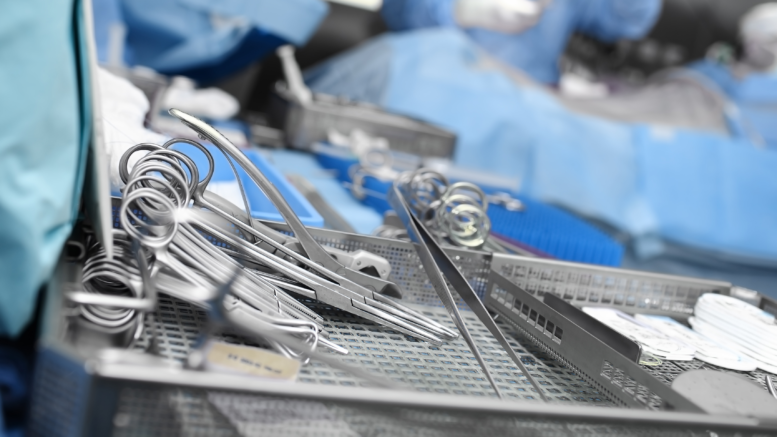A new study published today in the American Journal of Infection Control (AJIC) shows that manual cleaning of reusable medical instruments generates substantial splash more than seven feet from the source. The findings reinforce the importance of engineering controls and appropriate use of personal protective equipment (PPE) to reduce the risk of contamination for both processing personnel and their facilities.
“This study confirms that technicians working in sterile processing departments are at risk for exposure to water droplets that may contain blood, tissue and other patient fluids,” said Cori L. Ofstead, president and CEO of Ofstead & Associates, and the paper’s lead author. “Even in a sterile processing department optimally designed to reduce potential exposures, we were surprised by the abundance of droplets generated during the performance of instrument processing steps that were completed in accordance with manufacturers’ instructions for use.”
The study expands upon a pilot project completed by Ofstead and colleagues in 2021 - the first real-world evaluation of PPE effectiveness for sterile processing personnel – which concluded that personnel who process reusable medical instruments and equipment may be exposed to tissue, blood, and other patient fluids even when wearing recommended PPE. Previous research has demonstrated a link between contamination disseminated from sinks and healthcare facility outbreaks.
The current study was conducted at a large, urban academic medical center, within a new sterile-processing department that had been designed to optimize workflow and prevent cross-contamination. To quantify the amount of splash generated during manual processing activities, characterize droplet dispersal patterns, and assess PPE effectiveness, researchers engaged experienced, certified processing personnel to conduct simulated processing of a gastrointestinal endoscope and an ultrasound probe following manufacturers’ instructions for use (IFU). Prior to the simulations, moisture-detection paper was affixed to the PPE of technicians working at the sink and stationed 3-4 feet away, as well as environmental surfaces, including the department floors.
Following completion of the cleaning tasks, researchers measured the quantity of droplets generated as well as the extent of dispersal. Results show that every processing cycle generated splash at some point, with droplets detected up to 7.25 feet away from the processing sink. Some activities, particularly rinsing the ultrasound probe per IFU, generated substantial splash that exposed the environment and equipment near the sink, as well as the processing technician performing the cleaning. The technician at the sink was exposed to droplets from head to toe during most activities and extensive droplets were detected on gowns and shoe covers worn by technicians 3-4 feet away.
Beyond the implications for individuals in and around the processing sinks, splash represents a potential contamination source for other staff and patients in healthcare facilities. Standards state that liquids can act as a vehicle for the transfer of microorganisms. In the current study, transporting wet endoscopes dispersed droplets on a 15-foot path from the sink to the automated endoscope reprocessor.
“This study is instructive for infection preventionists and workplace safety professionals, providing a backdrop against which they should review Sterile Processing Department workflows and evaluate whether additional infection prevention or engineering control measures are needed to best protect workers and others in their facilities,” said Linda Dickey, RN, MPH, CIC, FAPIC, 2022 APIC president. “It also reinforces the critical importance of a safety culture that supports workers -- including processes and training that facilitate appropriate usage of PPE, such as sufficient time to doff and re-don PPE during the course of reprocessing instruments -- for adequate protection from moisture strikethrough.”
Reference: Association for Professionals in Infection Control and Epidemiology (APIC)
“Splash generation and droplet dispersal in a well-designed, centralized high-level disinfection unit,” by Cori L. Ofstead, Krystina M. Hopkins, Frank E. Daniels, Abigail G. Smart, and Henry P. Wetzler, was published online in AJIC on October 13, 2022. The article may be found online at: https://doi.org/10.1016/j.ajic.2022.08.016
